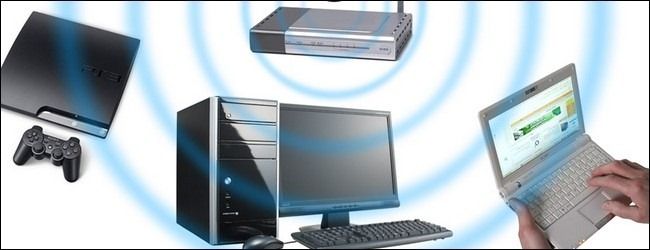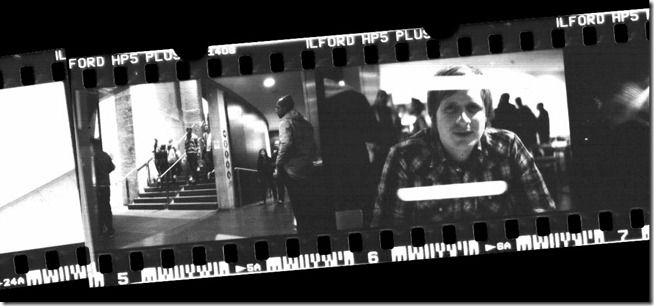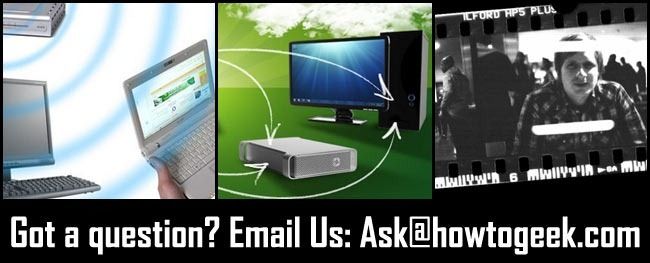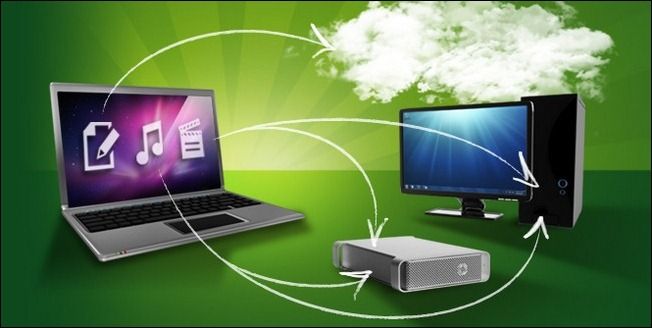Quick Links
Once a week we round up some of the questions pouring into the Ask HTG inbox and share them with everyone. This week we're looking at how to connect a particularly stubborn laptop to a Wi-Fi router, setting up a growth-friendly home backup plan, and what to do with RAW camera files.
Why Won't My New Laptop Connect to My Wi-FI Router?
Dear How-To Geek, I'm tearing my hair out here. I have a new laptop and it absolutely will not connect to my home Wi-Fi network. Everything else will: my iPad, my wife's laptop, my desktop with a Wi-Fi antenna, my Wii, everything will connect. Everything that is, except for my new laptop. I know it's not the laptop because it will connect just fine to open and encrypted networks outside my home (work, coffee houses, and so on). I've double checked all the settings, I've rebooted, the router, I have no idea what to do. How is this even possible? Sincerely, Wi-Fi Crazy
Dear Wi-Fi Crazy, This is one of those moments where a reader writes in with a problem that we've also torn our hair out over. While we can't promise this solution will work, it worked like a charm for us. In our case, we had a netbook that simple would not connect to our office router. It worked fine everywhere else but the office. We did absolutely everything we could think of: changed encryption settings, rebooted the router, turned off the encryption, etc. but nothing worked. You'll never believe the solution. At some point in the trouble shooting we noticed that the router was set to enforce Wi-Fi G only (and not allow devices to select from B/G). Now that makes sense to have on, right? It has been years since any consumer devices used B. Only it turns out that the netbook in question was really picky about it and, apparently, wanted to ability to pick B or G (but always ended up picking the speedier G connection). Once we turned it from G-only to Auto everything was fine. We can't promise that's your solution too, but this is the only time we've ever run into this problem and that was the immediate fix.
Where Can I Find a Backup Solution That Scales Well?
Dear How-To Geek, I've been hearing more and more about cloud-based backup solutions, but so far I haven't really found a solution that seems to scale well. What if I want to do more than just backup a handful of files to a remote server? What if I want to back up to other computers on my network? To my brother's computer across the state? To removable media? I'd prefer to not have to run four different programs. Can you point me in the right direction? I'd really like a simple solution that lets me add/expand my backup plan as I feel the need. Sincerely, Backup Serious
Dear Backup Serious, What you're requesting is a bit of a tall order, but we think Crash Plan is probably the best fit for your all-in-one needs. CrashPlan has a great backup suite that is totally free (you only pay for anything if you end up subscribing to their cloud-based storage model). Using CrashPlan you can easily backup to your own external/internal drives, network storage, removable media, and remote locations (i.e. your brother's house if he is willing to run CrashPlan too). Add in their cheap $10 a month basic online storage plan and you've got yourself a multi-prong backup solution that includes two remote locations and as many local online/offline backups as you wish. Check out our guide to getting started with CrashPlan here.
What Are RAW Camera Files? 
Dear How-To Geek, I recently upgraded from a little point-and-shoot digital camera to a full-size DSLR. So far so good, but there is one thing I'm unclear on. The camera is capable of shooting in RAW file format. Other than the files are bigger and it's an alternative to JPG, I'm not really sure what the point is. Clearly it's in there for a reason and I'd probably benefit from using it, I'm sure (?) so would you mind shedding some light on what exactly this RAW business is all about? Sincerely, RAW Wondering
Dear RAW Wondering, The quick and dirty answer is that RAW is a very minimally processed capture from the camera's sensor (while JPG is a heavily processed capture). Think of RAW as being a digital negative and JPG as being somewhat like a finished product (as the camera, unseen by you, already made a ton of decisions and corrections to the photo the moment you took it). Many people prefer to work with RAW because it allows them a much greater flexibility in post-processing to fix mistakes made in the field and push the photo in a new direction. Check out our full run down on the RAW format here.
Have a pressing tech question? Shoot us an email at ask@howtogeek.com and we'll do our best to respond.


